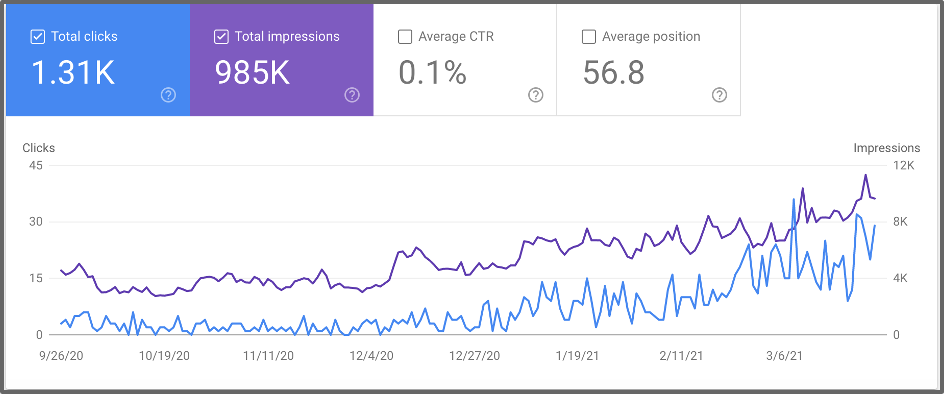Internal Linking for SEO: Complete Guide to Success

I’m going to start this article with no filter. If you want to rank and get meaningful traffic in 2024 – your website’s internal linking structure is CRUCIAL. Make it essential to understand how to properly create and track internal links.
All that money you put into AI content, or your writing team goes out the window if you don’t interlink it.
This guide will cover everything you need to know about internal links. We’ll highlight theory, best practices, and recommend tools to measure their effectiveness.
No BS, no gimmicks… Pure action steps from someone who’s been in the SEO industry for 10 years now. Well, actually there’s going to be ONE bias in tools, but we’ll talk about it later.
Let’s dive in.
What the Hell are Internal Links?
Contents
Let’s say you’re reading an article on Healthline about green tea. As you skim through sections, you see a link that points to a Healthline page about L-theanine.
That’s an internal link… It’s just another resource on the same website. Simple, right?
Now, note that L-theanine is a compound found in green tea. The Healthline editors did a great job in adding highly relevant internal links. They help educate readers, and support what they’re writing about.
Good internal linking strategies, just like good SEO strategies, provide VALUE to the reader.
Why Your Website Needs Good Internal Links
Relevant internal links are powerful. Just like a book’s table of contents, they help you find and land on related content quickly and easily.
Also, they encourage you to spend more time on the site. Explore one page after another, just like turning the pages of a book. The more time you spend, the more you learn and engage with the site.
So, in simple terms, they are your reader’s best friend. They help them have a better experience while navigating the site, making everything accessible and easy to find.
You start at one point, let’s say, a blog post. You find a term or a subject you’re curious about. There’s a link right there. Click on it, and voila, you’re at another page on the same site, learning more about that term or subject. You didn’t have to make a detour, and you’re still following a clear path through the site.
These internal links make the journey through your site smooth and enjoyable for users. They remove the guesswork and make sure the users find exactly what they’re looking for. In this way, they enhance the overall experience for anyone visiting your website.
Strengthened Page Authority
Linking to a page within your site transfers some of your domain’s authority to that page. This process, known as “link equity” or “link juice,” enhances the linked page’s authority. This practice will also increase its likelihood of ranking higher in search engine results.
Help Point to Content That Needs Visibility
A good internal linking system helps search engines grasp the relationship between your pages. This leads to improved rankings for related keywords. By strategically linking to your most critical content, you emphasize its importance to search engines.
There are many strategies that brilliantly display internal linking systems. The Beki AI team highly recommends Matt Diggity and his YouTube channel as a resource for this.
Best Practices for Internal Linking
It would be pretty dumb if we wrote content and just dumped naked URLs around. That’s why some brilliant person invented anchor texts. Whoever it was, I’d surely buy them a beer right now. Anchor texts come in various lengths and types, and if added correctly, can become irresistible.
Create Descriptive Anchor Texts
By definition, anchor text is the visible, clickable text in a hyperlink. It should describe the linked content, providing both users and search engines an idea of what to expect on the destination page. Generally, we recommend you avoid generic phrases like “click here” or “read more”. Instead, choose descriptive and relevant keywords that show the content’s subject.
Establish a Hierarchical Structure
Organize your site’s content in a logical, hierarchical structure. When interlinking, interlink small topics (child posts) to the main topic (parent). This hierarchy simplifies search engine crawling and understanding of the relationships between pages. Ensure that your most crucial (and profitable) pages receive the most internal links. That’s how you show significance.
Generally, you’ll spend most time and resources on crafting parent pages. It only makes sense to create internal links and get your users to read them, right?
Avoid Over-optimization
Like everything in SEO, please don’t overcomplicate… While internal linking is vital for SEO, over-optimizing can lead to negative consequences. If you do anything in excess, in SEO it’s seens as manipulative, and is NOT going to benefit your strategy. Aim for a natural linking structure and avoid overcrowding a single page with too many links.
My rule of thumb is, if the internal link won’t provide me value, it has to go. Chances are that the more links you add, the more are trash.
Essential Tools for Internal Linking Analysis
Remember when I mentioned bias at the beginning of this guide? Brace yourselves, here it comes!
You are currently on this website and for a good reason. I might be the co-founder, but I created this tool to help you with exactly what we discussed so far.
Internal linking as a process in SEO has always been… broken. During my whole career, I’ve built internal links manually. Well not really, I fiddled with some entity-oriented tools and WordPress plugins. However, they were so basic that I still considered internal linking a manual process.
Every link I built either manually or with the help of these basic tools had an issue. How do you track their impact?
I’ve found a way to do it with spreadsheets, but that involves revisiting every month and manually adding traffic stats. Oh look, last month I built 15 internal links to this new page, and it got 100 more clicks.
I knew there had to be a solution. I pitched the the idea to my brother, a senior software engineer with 15 years of experience. After LOTS of back and forth, testing and building in public – we launched Beki AI.
Beki AI
Beki AI is an AI internal linking tool that helps SEO and content professionals find, build and track internal links.
We’ve done our best to build a tool that handles your internal linking efforts from start to finish. Features and benefits include:
-
Full website crawl to scan all your important content
-
Algorithms that find contextual connections between your pages. This helps you interlink only 👏 highly 👏 relevant 👏 content.
-
Turn opportunities into links in just a few clicks. Don’t know which anchor to use? No worries… Our AI suggestion feature creates exact match, partial match, or contextual anchors in seconds.
-
All internal links created through Beki AI have a unique tracking ID. That means every click, impression and CTR will be tracked. On EACH internal link!
-
No more guesswork. Look at analytics and measure the real impact your internal links made. That means you can finally see the ROI on building internal links.
-
Integration with Google Search Console to see all your organic metrics.
-
Integration with WordPress to update your posts and create links with just a few clicks, straight from Beki AI.
What’s best is that we offer a 7 day free trial for up to 100 tracked pages, and our plans start at only $29/mo.
Google Search Console
The tool, the myth, the legend. This free tool from Google is a staple for every SEO expert, content specialist and marketer. Its main features indexing and traffic related… but, let’s not sleep on their internal linking stats. As mentioned, we do show lots of organic traffic metrics from GSC because it’s accurate and relevant.
GSC offers valuable insights into your site’s internal linking structure. You can check your top internally linked pages in GSC. Frankly, it’s poorly visualized and count use some work but it’s Google… We can’t really expect fancy UI for SEO tools.
Screaming Frog
Another staple in the SEO toolkit, Screaming Frog is an absolute monster of a software. It can crawl your website and generate detailed reports on your internal links, including anchor text, link equity, and more. This can help you identify areas for improvement and ensure your linking strategy aligns with best practices.
What’s best is that Screaming Frog is constatly releasing important updates. There’s nothing better than an active project that develops in a good direction.
Ahrefs
This is a software a lot of people hate on nowadays. Coming into 2024, Ahrefs got a lot of eyeballs for their pricing strategy, and for most SEO it’s unaffordable.
For those who can afford this behemoth, this SEO tool includes internal linking analysis. Even though it’s pretty basic, their internal linking opportunities feature does the job. However, as we mentioned before, it doesn’t have any advanced analytics or tracking for your work.
Aside from opportunities, the ahrefs Site Audit feature is pretty useful for internal linking. It can identify orphan pages, broken links, and opportunities for your internal linking structure.
Link Whisper
This is a popular WordPress plugin for internal linking and has been around for quite some time now. They have pretty affordable pricing models which revolve around licensing.
However, it’s important to mention that the logic behind their internal linking resembles the age of the software. After using the tool extensively, you can find yourself thinking if it was worth buying the license, because the link relevance is just not there.
Now I’m not firing shots and this is not based on competition, I would actually love to see them develop further. This would benefit our space and the industry. They’re already established, so might be easy?
Measuring the Impact of Internal Linking
To measure the effectiveness of your internal linking strategy, track key performance indicators. Tracking KPIs are a standard practice in SEO and here are some suggestions for internal links specifically:
-
Organic search traffic. Monitor your organic search traffic. This will determine if your internal linking efforts are leading to better rankings and visibility.
-
Compare organic traffic to number of internal links. We’ve created a feature that intersects # of internal links you built with organic traffic. This means you can attribute your links to the traffic you’re getting.
-
Bounce rate. A lower bounce rate indicates that users find your content engaging and are more likely to explore your site further.
-
Time on site. If users are spending more time on your website, it’s a good indication that your internal linking is helping them discover more relevant content.
-
Pages per session. A higher number of pages viewed per session indicates that users are navigating through your site more efficiently, thanks to your internal linking efforts.
-
A well-executed internal linking strategy is an essential component of a successful SEO strategy. Build relevant internal links, and your website will thrive… Enhanced user experience, improved site navigation, and better rankings.
Take my advice and put some effective work into internal links. Measure their impact and when you see the results rolling in, implement them on a scale.


